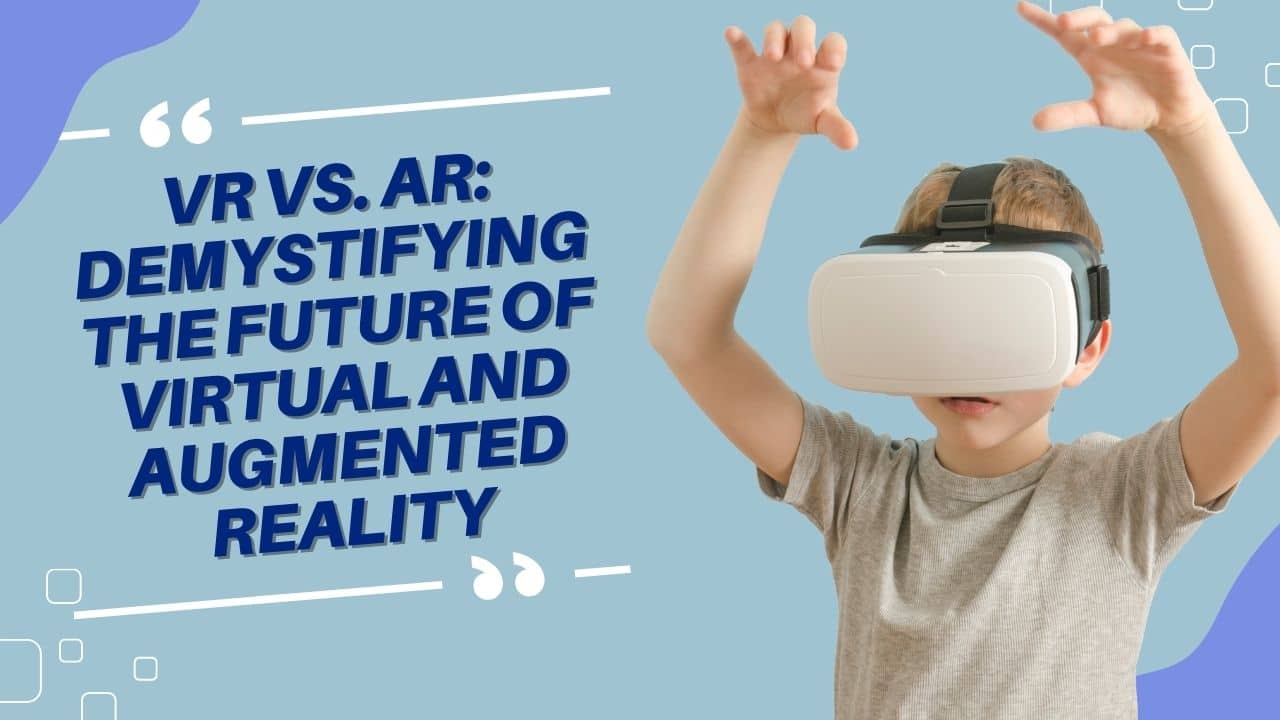VR vs. AR: Demystifying the Future of Virtual and Augmented Reality
Virtual Reality (VR) and Augmented Reality (AR) are changing how we interact digitally. They have different uses and experiences. Knowing their differences is important to understand how they will affect us.
Virtual Reality (VR)
Definition and Experience: Virtual reality puts users in a digital world, disconnecting them from reality. With headsets like Oculus Rift or HTC Vive, users enter a virtual world where they can interact with 3D objects as if they were real.
Applications:
- Gaming and Entertainment: VR makes games more immersive by letting players feel like they are in the game. It also makes movies and virtual tours more exciting by making you feel like you are really there.
- Training and Education: VR is used for simulations in fields like aviation, medicine, and military training to help people learn complex tasks in a safe environment.
- Therapy and Rehabilitation: Virtual reality helps with treating PTSD, anxiety, and phobias by using controlled exposure therapy. It also helps with physical rehabilitation by providing fun exercises.
Advantages:
- Engaging experiences with lots of interaction.
- Safe environment for training and education.
- Potential for new and exciting uses in entertainment and therapy.
Challenges:
- High cost of VR headsets and equipment.
- Motion sickness and discomfort may occur during long periods of use.
- Tethered headsets and space limitations restrict movement.
Augmented Reality (AR)
Definition and Experience: AR adds digital info to the real world, making the user see their surroundings better. Devices like smartphones, tablets, and AR glasses, like Microsoft HoloLens, show digital content in the real world.
Applications:
- Retail and E-commerce: AR lets customers see products in their space, try on virtual clothes, and check how the furniture fits in their homes.
- Education and Training: AR offers interactive learning with 3D visuals and step-by-step guides.
- Navigation and Maintenance: AR helps people find their way by showing directions in the real world and helps technicians by displaying repair instructions on machines.
Advantages:
- Enhances real-world environments with useful information.
- Accessible through common devices like smartphones.
- Encourages engagement and interactivity without isolating users from their surroundings.
Challenges:
- Dependence on device compatibility and performance.
- Privacy concerns with continuous data capture from the environment.
- Digital clutter and distractions can be a problem in daily life.
The Future of VR and AR
VR and AR are quickly getting better with new technology that will fix current problems and create new opportunities.
Integration and Convergence: In the future, VR and AR might combine to create Mixed Reality (MR), blending digital and physical worlds. This could change how we use digital content and communicate with others.
Industry Impact:
- Healthcare: VR and AR will continue to transform medical training, patient care, and surgical procedures.
- Education: These technologies will make learning more fun and effective by creating immersive and interactive experiences.
- Work and Collaboration: VR and AR will help remote work and virtual collaboration by creating virtual offices and improving team interactions.
Consumer Adoption: As technology gets cheaper and easier to use, more people are expected to start using VR and AR. Better content, improved hardware, and increased awareness will make these technologies more popular.
Conclusion
Virtual Reality and Augmented Reality are changing how we see and interact with the world. VR puts us in digital worlds, while AR adds digital elements to our real world. These technologies are important in many industries and will shape how we use technology in the future. It’s important to know the differences, advantages, and difficulties of VR and AR as we explore this new technology.

